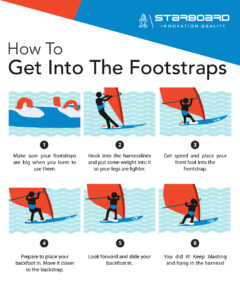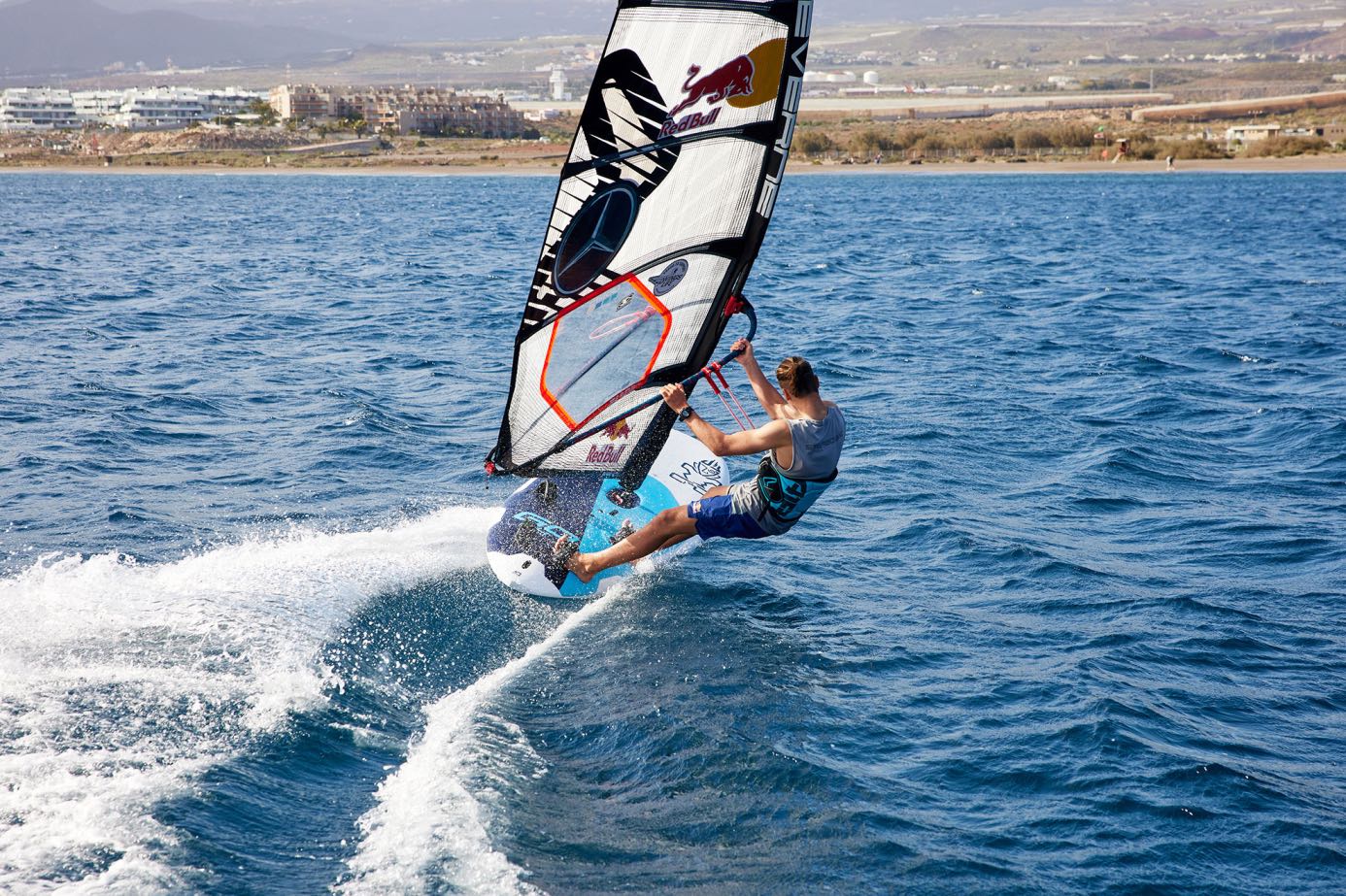Get Extra Control Using Footstraps
If you have done a few windsurfing sessions, and are using a harness, it’s time to start planing and learn how to use the footstraps! This will kick off your blasting career and help you enjoy your sessions even more with extra control.
We all remember our first time planing. Hooked into the harness lines, full speed! The board goes faster and faster before you catapult due to losing control as a result of not using the footstraps.
It’s time to stop catapulting and get into your footstraps!
But first, let´s make sure you have prepared your board with BIG footstraps! With that, we mean BIG straps! Sometimes it can be hard to make straps big enough when they are new or old. A tip is to put tennis balls or bottles in them over a night to “shape them” perfectly.
Why Do You Need Big Footstraps?
It’s easier to get into them, and it’s safer for your feet when you crash. It´s easy to get into them, and easy to get out of them.
When you get planing in the harness it’s always important to look forward in the sailing direction to keep your speed. The moment you want to put in the front foot when the wind is limited and the straps are too small it’s hard to not look down at your feet. It’s a common mistake to look down and lose all your speed and fail to get into the straps. It is also very frustrating!
With bigger straps, it’s a piece of cake to slide your feet into the straps without looking down at your feet.
The feeling of blasting in the harness locked in your footstraps is just unreal and it is always worth learning to use them!

Let’s get into the footstraps as easy as possible
Step 1: You have already prepared your footstraps, so you are ready to start using them!
Step 2: The moment there is enough wind, hook into the harness lines. Part of your bodyweight will go into the harness, so your legs will be «lighter» which makes it easier to get into the straps soon.
Step 3: You are hooked into the harness. Move your feet one step further back on the board closer to the straps. While looking forward hang in the harness and slide your front foot into the front strap. If the wind is light it helps to sail slightly downwind to keep the speed or do a little backhand «sail pump» to get more power in the sail.
Step 4: Prepare to place your backfoot in. Move it closer to the backstrap.
Step 5: Keep looking forward. Do you have enough wind in the sail, and are you planing full speed? If yes, slide your backfoot into the backstrap. Make sure to have tension in the harness lines so your feet are «lighter» and look forward! It can feel a little bit scary in the beginning, but being outside of your comfort zone will only make you a better windsurfer!
Step 6: Enjoy the ride! You did it! You have probably crashed a few times to make it here, but it was worth it, right?
What if it does not work out?
Every time you learn something new in windsurfing, you need to try it many times. Don´t give up! Keep practicing and see where you struggle and work on improving that! You might experience that the board will start pointing upwind and lose speed the moment you try to put the feet in the straps, and in the worst case fall when you try to get into the backstrap. If so, sail more downwind or simply look slightly downwind. If it’s too windy then make sure to put more weight into the harness lines with your body to make the board more stable.
Why will the board be more stable when you put your weight into the harness?
The harness lines are connected to the boom and the boom is connected to the mast and the mast base. When you place weight on the mast base the board is more stable because the mast base is centered in the most stable place on the board.
Good luck and have fun learning to use the footstraps!
If you are new to windsurfing, check out our boards that are perfect to learn and progress on, click here.
If you are an intermediate windsurfer and want to try out faster, smaller boards, click here.







